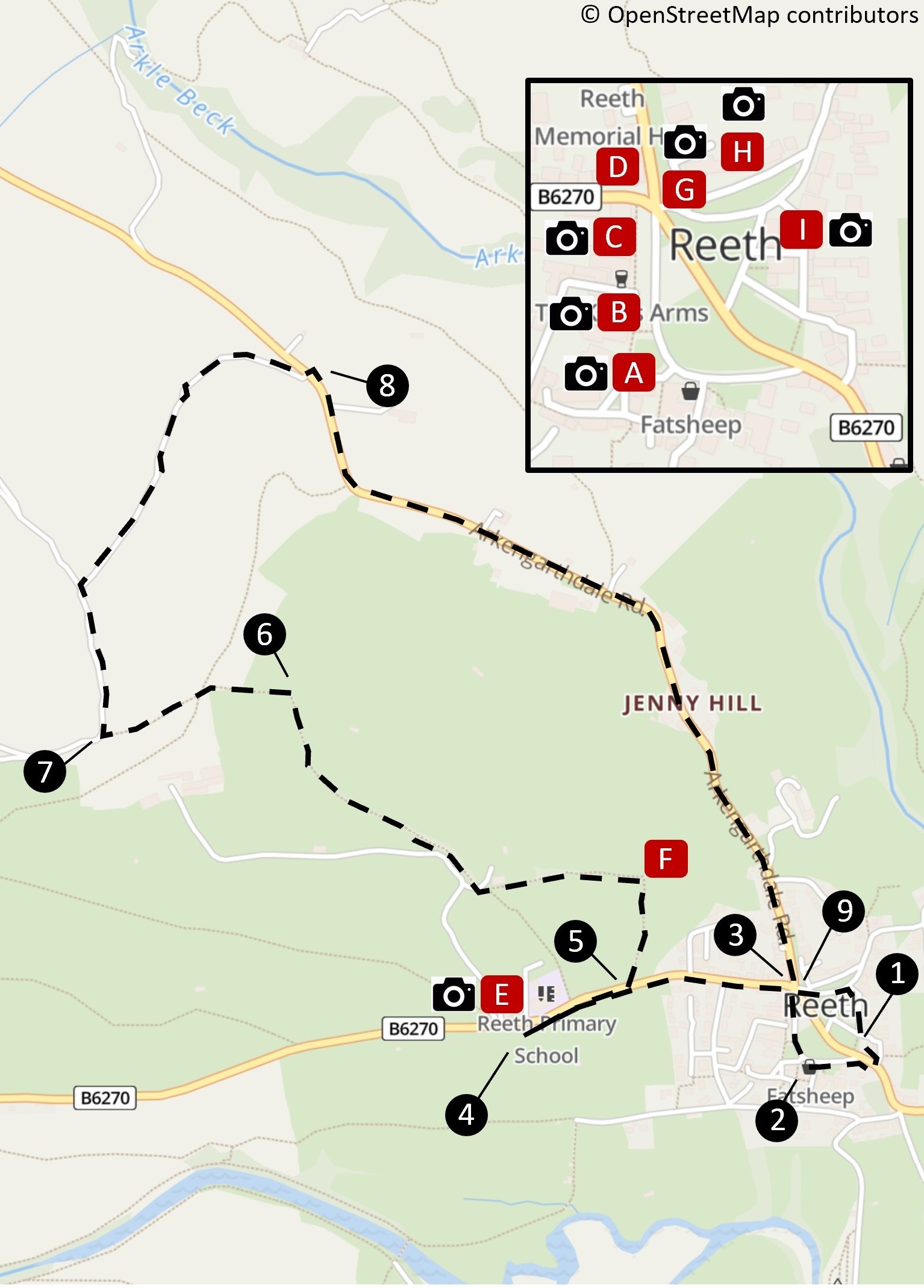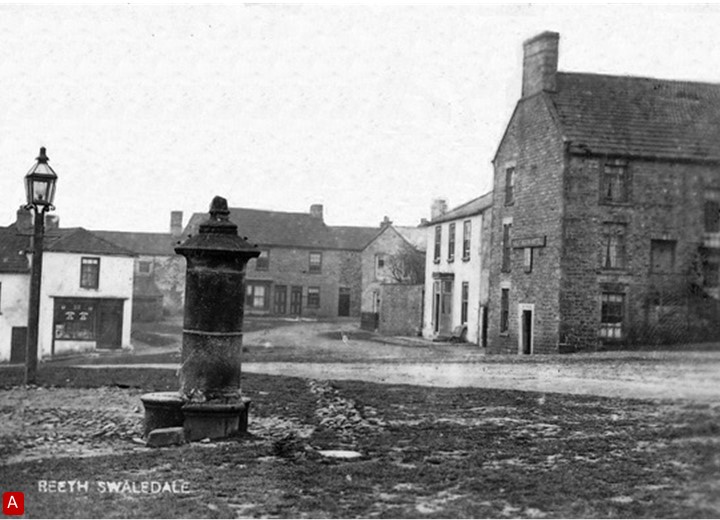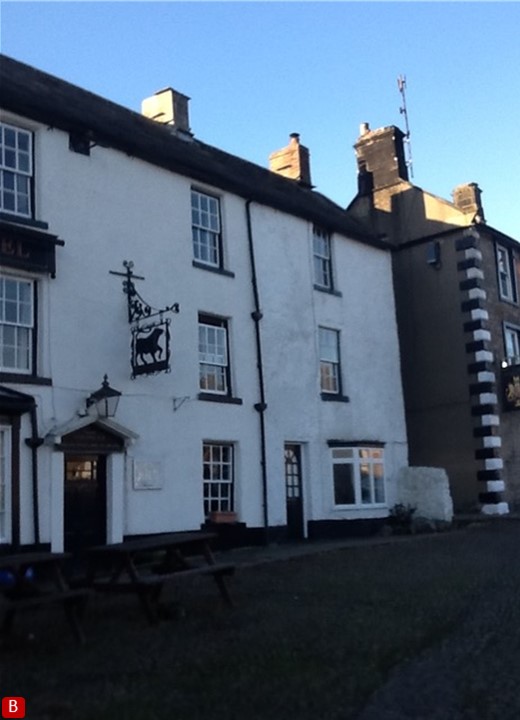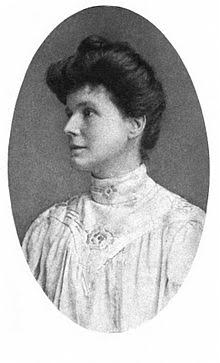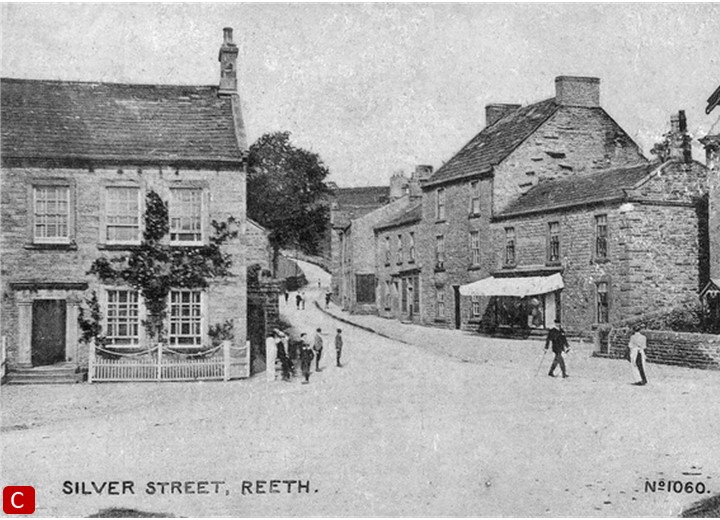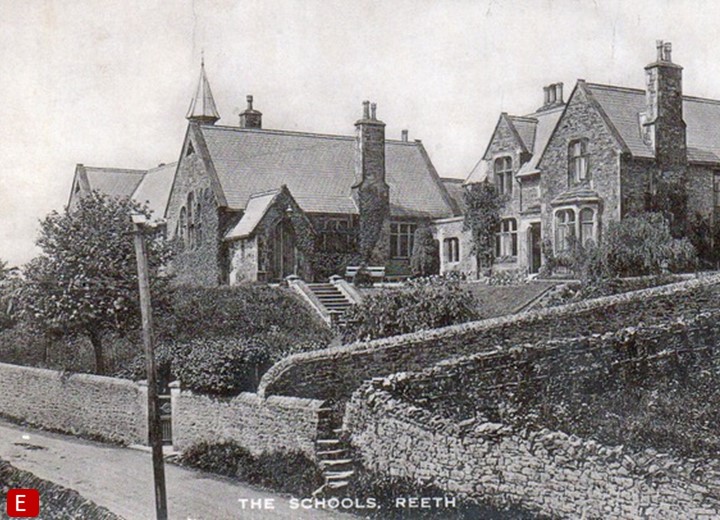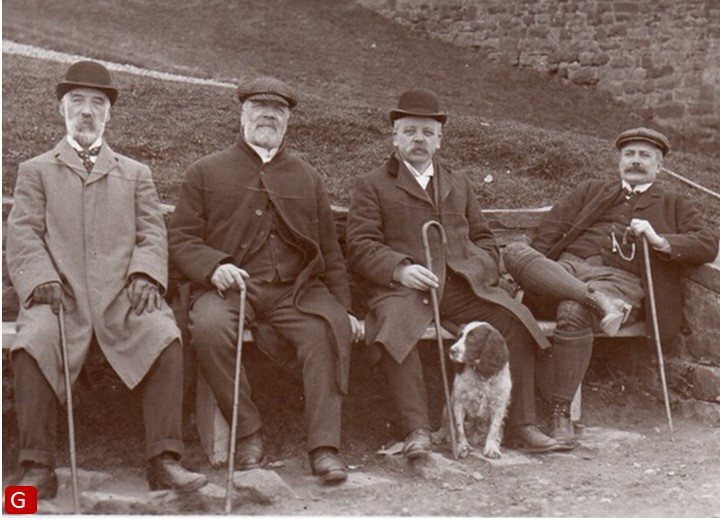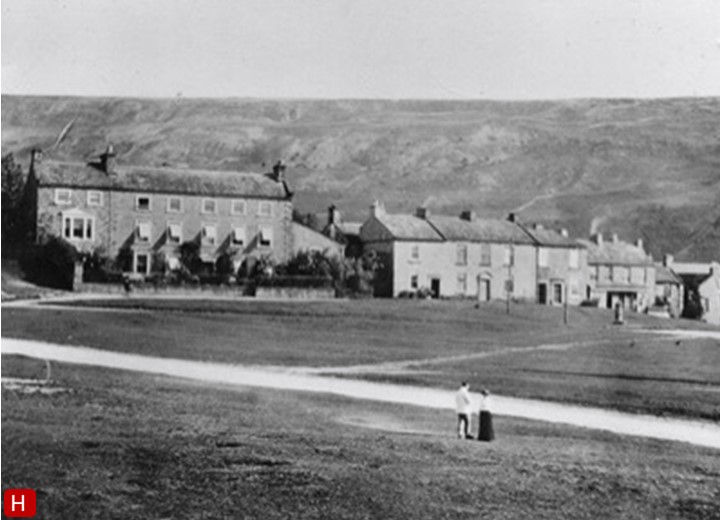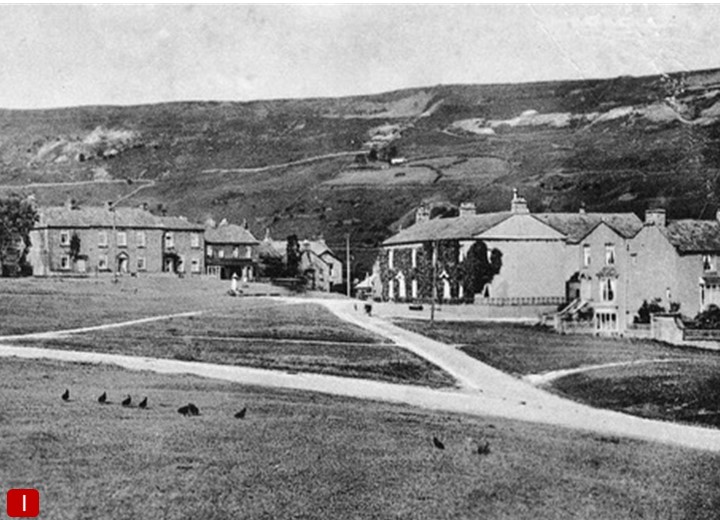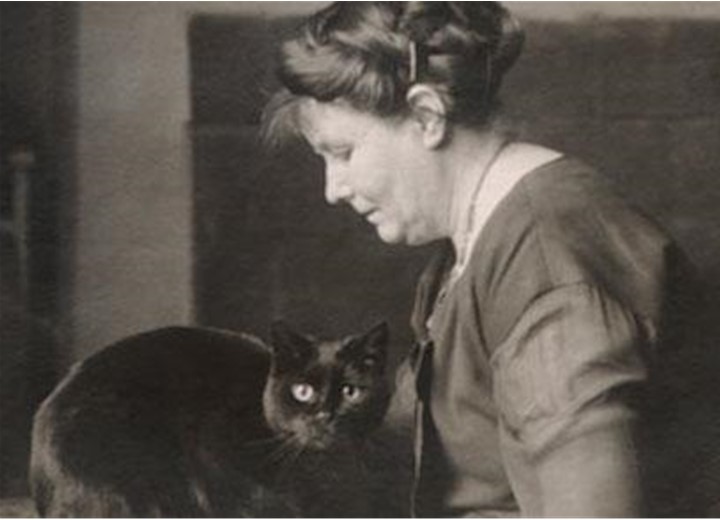May Sinclair (1863-1946) is considered by some as the ‘leading woman novelist between the death of George Eliot and the rise of Virginia Woolf’.
Yet few are aware of the importance of Swaledale to her life and work.
This short walk takes you around and above Reeth to discover pivotal places featured in her two novels.
Steps
-
With Reeth Green behind you, take the cobbled lane down to the R of the Museum. Turn R at the main road and, taking care,
cross to take the back lane on L passing The Copper Kettle.
-
Turn R at Hudson House to pass in front of the Georgian Façade of High Row.
-
Turn L in front of The Buck Hotel, continuing up hill along Silver Street to Reeth School.
-
Retrace your steps for 120m beside a high wall.
-
Turn L up a track, ‘Skelgate Lane’. (For a shorter walk, continue down to point 9 at The Buck Hotel). Keep climbing with
narrow track until a gate leads onto the open moorland flanks of Calver Hill.
-
Keep ahead, initially with a wall to your L, on a faint track.
-
On reaching a broader track, turn R. Keep with this track until it reaches the Arkengarthdale Road.
-
Turn R, and taking care, enjoy the pleasant return along the road to The Buck Hotel.
-
Turn L, passing the Post Office on the way back to the Museum.
May Sinclair (1863-1946) is considered by some as the ‘leading woman novelist between the death of George Eliot and the rise of Virginia Woolf’.
She numbered among her friends Thomas Hardy, H. G. Wells, Henry James and John Galsworthy. She was a patron of Ezra Pound. Yet few are aware of the importance of Swaledale to her life and work.
Her heroines Mary Olivier and Gwendolen are intimately aware of the landscape which reflects their psychological state and drives the novels.
You can book a curator led version of this walk with readings from the novels and more literary and local historical context.
If you are interested please contact Helen Bainbridge at the Museum on helen@swaledalemuseum.org
Points of Interest
-
Hudson House (the white fronted house second from R in picture) was the home of Sinclair’s heroine Mary Olivier.
‘Her father’s house had a good simple face. You could trust it. Five windows in the rough grey wall, one each side of the side door,
three windows above. A garden at the side, an orchard at the back’ (which is now the Community Orchard).
-
Victoria Cottage (far R in picture, with the bay window at the end of the white-fronted block) was May Sinclair’s regular writer’s retreat
which she rented between 1912 and 1919. Here she wrote two of her most famous novels, the semi-autobiographical Mary Olivier (1919),
and The Three Sisters (1913), both republished by Virago in the 1980s. Sinclair called Swaledale ‘Rathdale’,
Reeth ‘Morfe’: ’Morfe was beautiful … She loved it at first sight’, the ‘grey village stuck up on its green platform unseated high,
purpose mound of Karva Hill’.
-
Langhorne House (far L in picture), and the cottage next door, were the home and surgery of Dr Stephen Rowcliffe,
Sinclair’s anti-hero in The Three Sisters. The eligible bachelor Rowcliffe is the subject of Mary, Gwendolen and Alice’s attention
and is part-modelled on Sinclair’s real-life GP in Reeth, Dr Spiers.
-
The Buck Hotel. Mary Olivier’s father goes regularly to this public house, and gets drunk.
Sinclair’s real father lost all the family money earned from shipbuilding in Liverpool through drink,
leaving the family impoverished, and pushing Sinclair to write to support the family.
-
Reeth Primary School was granted an annual prize by May Sinclair which is still awarded today.
If you cross the road and look down the valley towards Healaugh Sinclair describes
‘Down there, where the … dales spread out, … like a tiny Dutch landscape’.
-
Look across to Fremington Edge called by Sinclair ‘Greffington Edge’, ‘a rampart of grey cliffs’.
Mary Olivier says of Skelgate: ’Outside the village, the schoolhouse lane, a green trench sunk between stone wall, went up and up,
turning three times, … When you got through the gate you were free’.
-
Sinclair notes via Mary Olivier ‘the bench at the corner at Kendals’ wall …Mr Oldshaw, the Banker, and Mr Horn, the grocer
and Mr Ackroyd the shoemaker, would be sitting there talking to Mr Belk who was justice of the peace’.
This famed local gathering place (photo 1906/7), now the site of the Jubilee Bus Shelter, is still known locally as Reeth Parliament.
-
The Burgoyne Hotel is the home of Miss Kendal, ’the long house at the top of the Green was gay with rows of pinked white sunblinds’.
(Hill House, which became the Burgoyne Hotel after the Second World War, is to the L in the picture. You can see the sun blinds.)
-
Ivy Cottage. Mary Olivier is ‘excited because they were going to the ivy house for tea. It looked so pretty’.
(Ivy Cottage is the ivy-clad house centre-right in the picture. It is now Ivy Cottage Tea Room, although the ivy has long since gone.)
Further Reading
Sinclair, May,
The Three Sisters
, Hutchinson, London, 1914, see also Virago Modern Classic, 1985 1,3
Sinclair, May,
Mary Olivier
, Hutchinson, London 1919, see also Virago Modern Classic, 1980 1,3
Raitt, Suzanne,
May Sinclair A Modern Victorian
, Clarendon Press, Oxford, 2000 3
Boll, Theodore,
Miss May Sinclair, novelist
, 1973
Also
https://www.poetryfoundation.org/poets/may-sinclair
https://maysinclairsociety.com/biography/
1: available from Museum bookshop. 2: available via our online shop. 3: available in our Library - contact us to arrange viewing.
|


